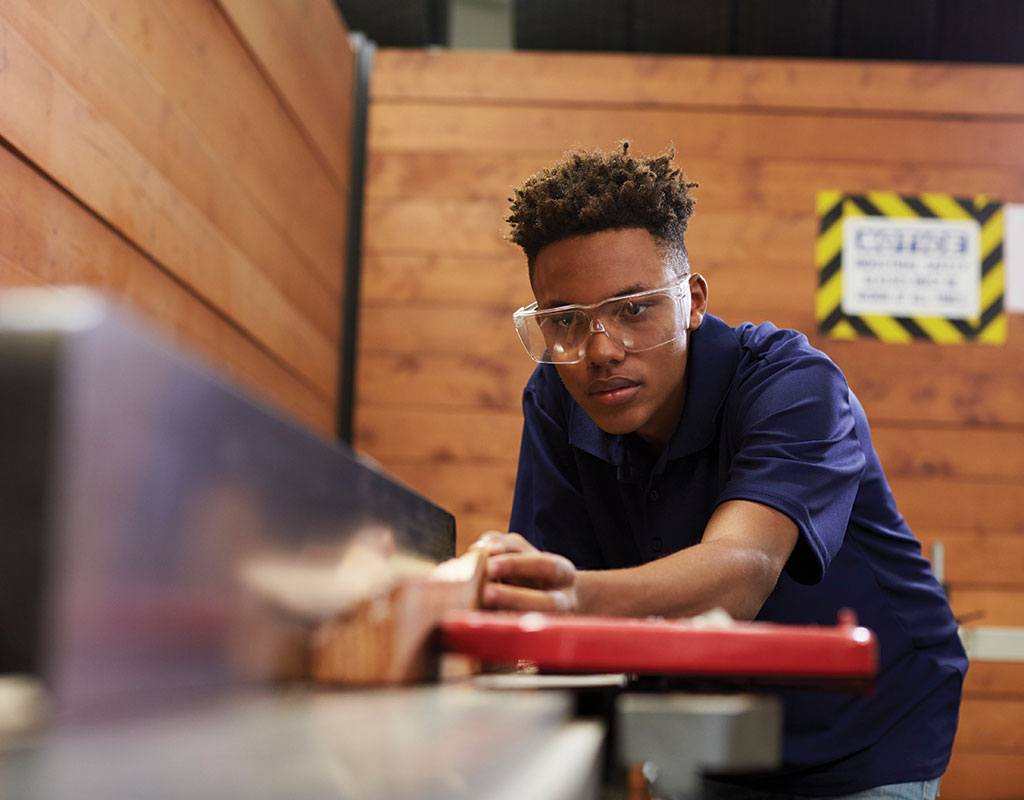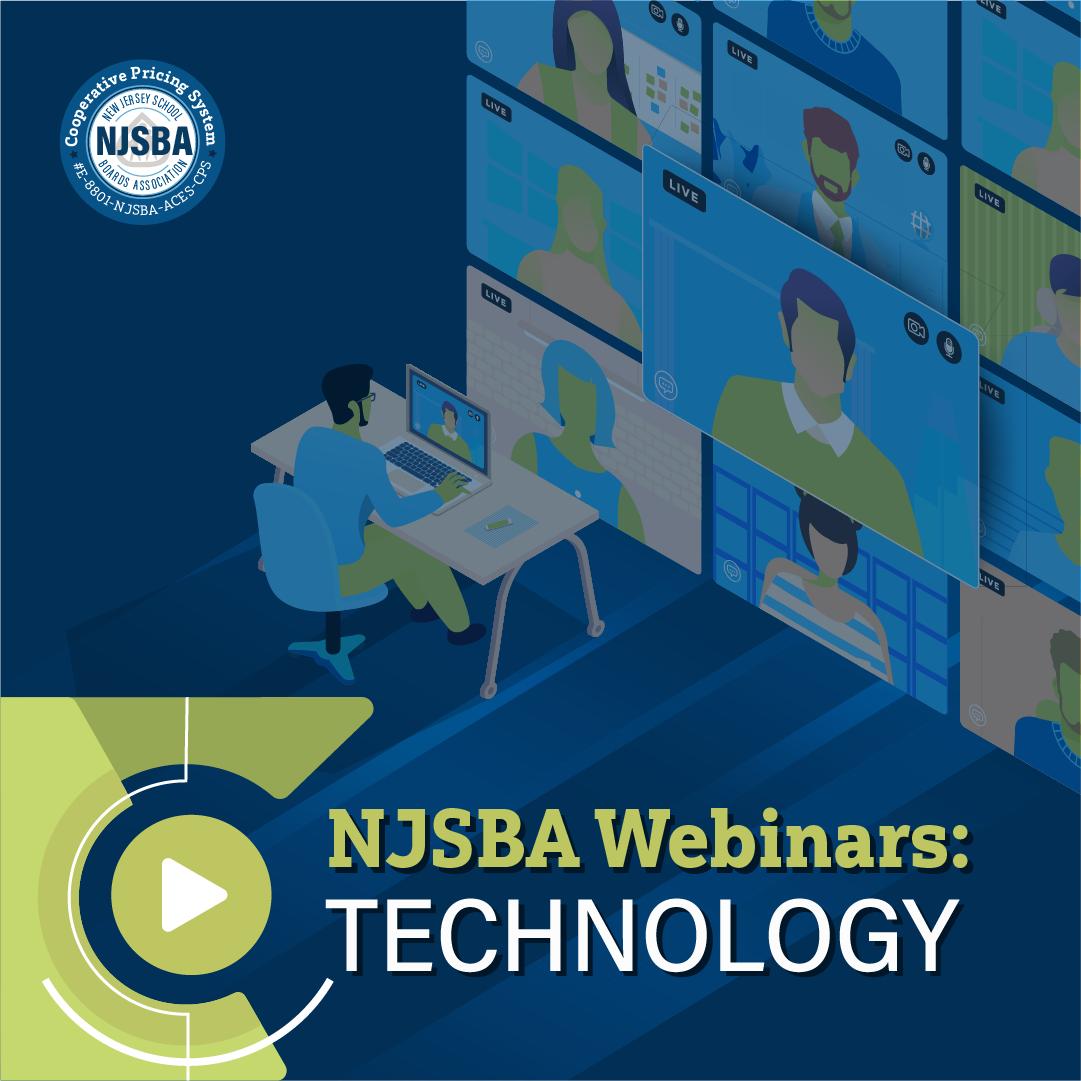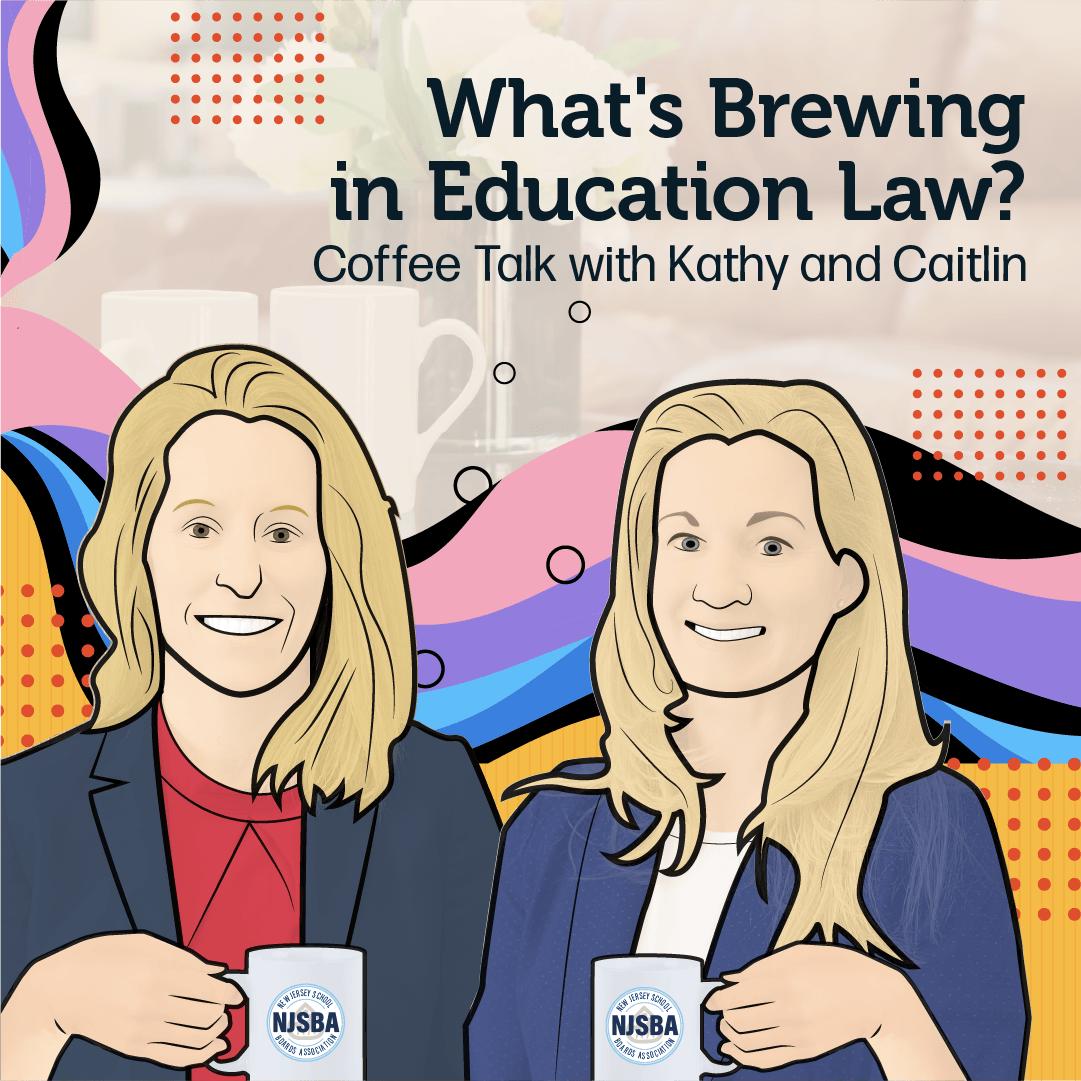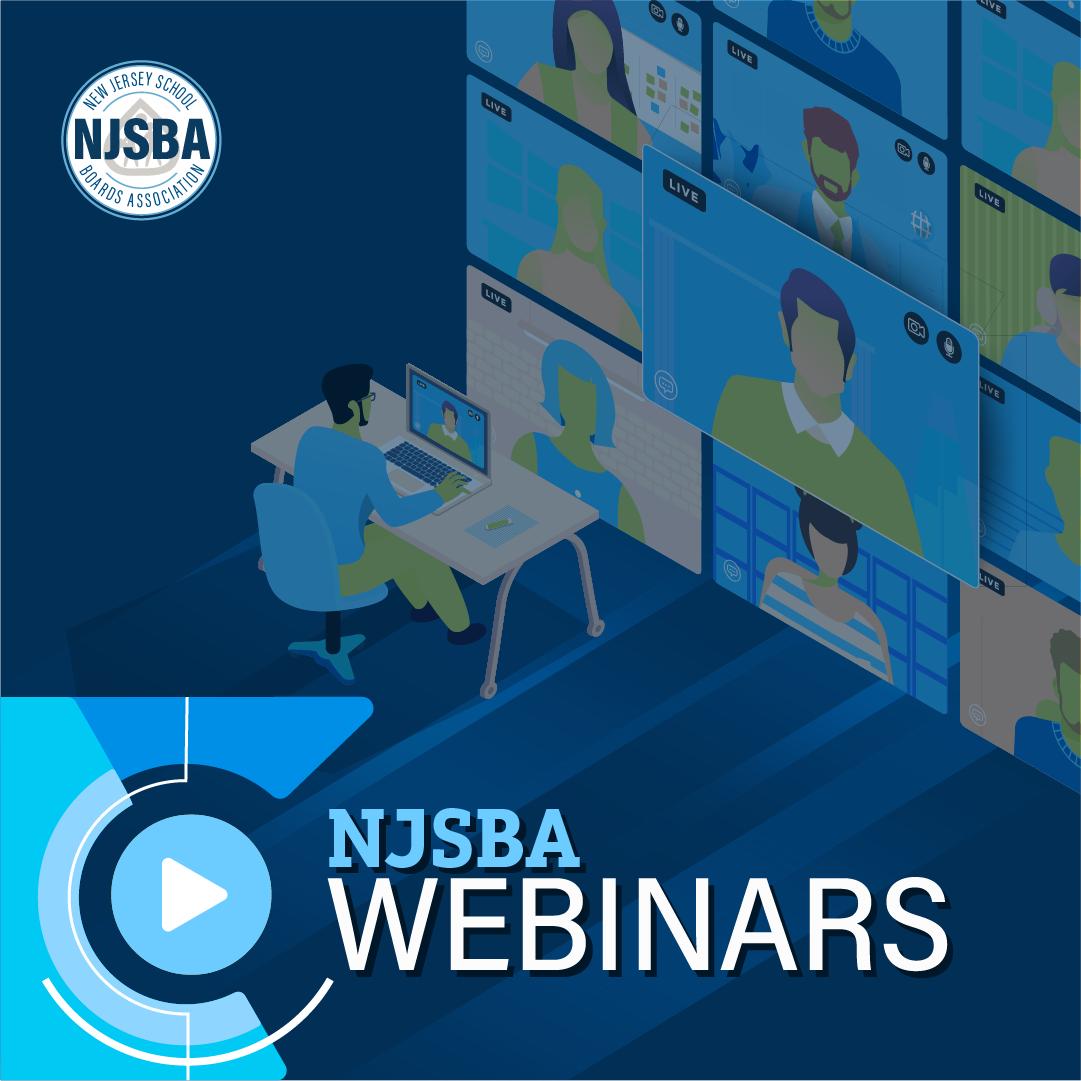When PwC, one of the world’s largest professional services networks, surveyed more than 10,000 corporate members for a 2018 report titled “Workforce of the Future: The Competing Forces Shaping 2030,” 60% of respondents said that “few people will have stable, long-term employment in the future.”
The implications are clear: Tomorrow’s workers need to possess skills that will provide an edge in a global economy – skills that are relevant and that make them so valuable that companies would not want to lose them. The question arises then in 2024, what should schools be doing, creating or upgrading to meet this challenge for students graduating from high school or post-secondary programs?
The answer lies in work-based learning, which is a term referenced in the Career and Technical Education Perkins V Grant and formerly known as structured learning experiences.
Work-based Learning Defined Much has been written about work-based learning over the past decade, and it continues to evolve, but the basic premise is that WBL comprises a technical education learning component, an academic component where key skills are learned, and last, the exposure to and incorporation of employability skills based on the job and real work applications. By participating in such a program that balances education and needed technical skills for a chosen career pathway, students gain first-hand knowledge as to how to thrive in the workforce by observing, interacting and learning what it takes to be successful.
The WBL school programs contain three key components: 1) the alignment of classroom and workplace learning; 2) application of academic, technical and employability skills in a work setting and 3) support from classroom or workplace mentors. In New Jersey, these experiences are guided by certified teachers by the New Jersey Department of Education who have a hazardous or nonhazardous endorsement to their teaching certification to oversee students placed in various industry experiences as part of the school curriculum.
Among those experiences, students may be placed in paid or unpaid positions and earn high school credits, much like an elective independent study. All New Jersey vocational technical school districts have WBL programs and many high schools across the state do as well, some of which receive Perkins funding.
In WBL student placements, students gain specific skills in connection with the classroom instruction in a specific industry or occupation. Students are provided opportunities to job shadow, take industry tours, receive mentoring, participate in simulations and participate in an interview process, including preparing a resume. Types of experiences vary and models may include internships, pre-apprenticeships, service learning or cooperative education placements.

Work-based Learning Is for All Schools Apart from WBL student experiences in CTE institutions in New Jersey, which numbered 12,000 in 2023, schools are required to promote the awareness of careers and provide exploration opportunities or discussions as early as elementary school. Boards of education across the state are mindful of the importance of the inclusion of career discussions and exposure to various pathways and preparation for jobs while in school. Board president for the Burlington County Special Services School District, Tyler Burrell, observed, “It is one thing to learn from a textbook, but priceless to apply those skills learned to real-world, hands-on situations. WBL addresses both and sets students up for success.”
Such exposure can come through career fairs, industry assigned project participation, industry speakers in classrooms, career interest inventories, bring-parents-to-work day, field trips and mock interviews, all of which provide a foundation for work-based learning and career pathway development.
Benefits of Work-based Learning Experiences There are three main parties positively influenced by WBL: students, career and technical education programs and employers.
WBL programs connect students to related technical instruction and learning linked to the real world. In addition, they provide students with an opportunity to apply skills learned in on-the-job experiences. Yet, beyond technical instruction, WBL in schools introduces key soft skills to prepare students for real world work scenarios, such as interview techniques, resume writing, working in teams, communication, self-management, time management, emotional intelligence, planning, critical thinking, self-advocation, dress, punctuality and maintaining a drug free environment, among others. Furthermore, WBL provides students access to observe industry professionals in person or simulations across key industries where placed.

The WBL experience positions students to have experiences with potential employers and to network among them. According to Northern Burlington K-12 Superintendent Andrew Zuckerman, “Work-based learning gives our students the opportunity to apply what they learn in the classroom to real world experiences. When the students talk about their work experiences in the classrooms, it authenticates the concepts they are learning and benefits the entire class.”

Glenn Robbins, the superintendent of the Brigantine School District, a K-8 school district, partnered with the local chamber of commerce to develop a community in design project titled the “Mr. Rogers Project” where students are exposed to a few businesses a week and then are given opportunities to make pitches to the local businesses, much like the popular TV series Shark Tank.
According to Robbins, “This promotes community engagement, entrepreneurism, architecture, construction, art, creativity and multiple applications to real-world problems to solve while promoting inquiry skills, soft skills and emotional intelligence.”

Dr. George Rafferty, superintendent of Mount Laurel Township Schools, which serves student PreK-8, said, “We believe that making children aware of the many career and technical education opportunities available is essential. We begin as early as preschool by exposing children to the various helpers and jobs existing in their community, through both the curriculum and experiential learning activities. Early childhood curriculum and classrooms provide our early learners with experiential learning centers where children can role play various careers through the materials, costumes and instructional materials provided in their classroom centers. In addition, we follow the recommendations of the American School Counselor Association by ensuring our students have equitable academic, career and social/emotional development opportunities provided to them in school.”
The second party that benefits from integrating a WBL program is the school itself. Vocational technical schools must have the programs based on their mandate and access to Perkins V funding. Other schools may host and find alternative funding to promote the experience or partner with other businesses or local chambers of commerce. Students can earn credits, earn money and test career paths while in high school with little or no expense and very little risk. In addition, schools that offer robust WBL programs often see increased enrollment. Many CTE institutions have had waiting lists since before the pandemic due to popularity and space restrictions. Furthermore, students enrolled in a WBL experience are motivated and have an eye on the future. Yet, not all students learn the same way or have the same learning styles – and WBL can accommodate different learning styles, providing individualized instruction and mentoring. What makes a WBL experience so impactful is that it is a community-focused effort to support local business needs.
Technical education programs offer up to 35 different career pathway programs. Some of what students learn may surprise you. For instance, Northern Burlington offers a career program focused on agriscience, which is only offered by a few other schools in the state.

Students who do not have transportation and can’t work in the community get the opportunity to apply work-based skills at school or within walking distance of the school. In addition to agriscience, much like other schools, Northern Burlington offers a child development program that incorporates the in-district preschool program while assigning high school students to support their job training, giving them the ability to earn credits and periodically visit local elementary schools. For other districts, such as Salem County Vocational-Technical School District, they promote cross-training as part of the student experience. In this district, as a student proceeds to the final year in the CTE program, they have the opportunity to be cross trained in a different, but related CTE program. This allows students to explore related careers and expand their skill set for job opportunities after graduation. When looking at the value of WBL, John R. Swain, superintendent of the Salem County Vocational-Technical School District, noted that “Career exploration is the foundation of CTE instruction and training. It is critical that students learn the many opportunities and career paths available to them, so they can choose a program and ultimately a career that matches both their talents and interests.”
Local employers also benefit in a WBL program. As part of the WBL program, employers interview and select among those students who apply, qualify, and who will most likely have a successful experience.
It is a very expensive process to onboard a new employee for businesses. The WBL experience provides a first-hand look for employers to interact with a pool of future skilled workers. The fact that schools help students develop soft skills, saving employers time and money so they can focus on the technical training, is a big plus.
A robust WBL program can save employers time and money on training and retaining future workers. Employers also like hiring students who train with them because these students have not yet developed bad work habits. In the end, the employer knows the capability of the student, because they trained the student. In addition, employers become a business and resource partner for mentorship, expertise, advisory roles or in-kind equipment for school leaders to update and upgrade their WBL and CTE programs. Last, successfully placed students may encourage the company to provide scholarships or paid work experiences beyond high school while in college, such as the program run by Envision Innovative Solutions LLC, which serves schools interested in applying immersive technologies to their academic programs.
There Is Something for Everyone in Schools In New Jersey, there are 21 counties, with each county having a vocational technical school district with a career and technical education curriculum. As of 2023, there were 593 operating school districts in the state. In addition to the general education population, among all of the districts and educational institutions in the state, there are students with exceptionalities who attend district schools who are matriculated in general education settings. There are also seven districts that serve special needs students whose individual education plan merit them being taught in a specialized setting.
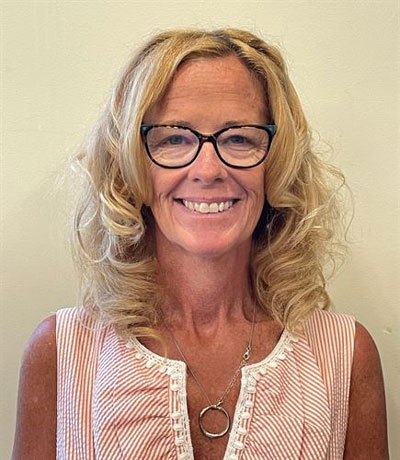
Among the seven special education districts, all provide some type of curriculum-based instruction pertaining to work-based skill development. These students are provided work coaches and when skills have been developed, they’re assigned to local businesses to work in paid or unpaid structured roles. The job coaches maintain close contact with the student and the employer. Coordinators assess student progress and address any interventions. “The employment experiences we provide are completely customized to emphasize each student’s strengths while meeting the skill requirements of the employers,” said Jamie Moscony, superintendent of Cape May County Special Services School District and Cape May County Technical School, as well as the chairperson of the New Jersey Joint Council of County Special Services School Districts. “We work closely with our community partners and students’ families to ensure that our programs are tailored to support a positive collaboration with employers, students and the communities in which they live.”
Since the pandemic, superintendents in special services school districts have observed a significant increase in local business interest in hosting and assimilating special needs workers. This trend has been beneficial, as many students have successfully transitioned into full-time employment after graduation. Districts such as Northern Burlington, Bergen County Special Services, Burlington County Special Services, Cape May Special Services, and Gloucester County Special Services, among others, offer students opportunities to work within the community and their own schools. For example, students often work in school cafeterias during the day or with district custodians in the summer as part of the Extended School Year Program or during the school year.
Throughout the year, these students are also employed at local businesses, including Acme, ShopRite and Wegmans, as well as in hotels, zoos and various dining establishments. These community connections are crucial for developing valuable partnerships and providing meaningful work experiences. Businesses are informed about the students’ abilities and capacities to complete assigned tasks, and work closely with job coaches to ensure a successful placement.
The programs are designed to meet the individual needs and strengths of each student, offering work placements in diverse fields such as retail, hospitality, health care, food services, public works and education. Regular community engagement plays a vital role in helping students build confidence and independence, ultimately supporting their successful integration into the workforce.
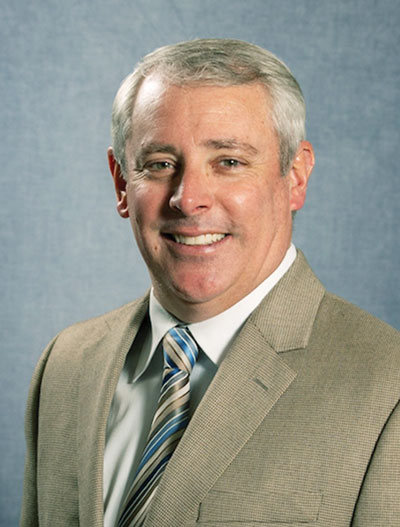
The superintendent of Gloucester County Special Services School District, James H. Dundee Jr., highlighted that at his “ ‘Schools for Neurodiversity,’ we are revamping our curricular model to include work-based learning that will be tied to daily living skills, as well as work-based internships and paid experiences. In partnership with Rowan College of New Jersey, GCSSSD has implemented a food service program to run the RCSJ cafeteria as well as the Together Café located in the Rowan University School of Medicine.”
Challenges to Work-based Learning Opportunities Though there are many benefits to a WBL program in schools, such as internships, apprenticeships or paid or unpaid work experiences, schools, students and employers can still face challenges when developing or running a WBL program or experience. Though care is taken, there can be a misalignment with career goals where tasks or projects assigned do not mesh with a student’s career goals or academic interests, which can dampen a student’s interest and motivation.
Given the intensity of supervision and guidance and typical 10 day visits by assigned personnel to the worksites as part of formal WBL programs and assessment, limited personnel may affect the level of adequate supervision or feedback from their supervisors or coaches to students. Companies such as MagicEdX, a startup incubator that utilizes AI to support the connection of businesses to students in WBL, can be a big help to WBL coordinators and employers.
Furthermore, during the pandemic many families and students learned firsthand the importance of balancing work and school and must be mindful of one’s workload, which when heavy, can lead to stress or burnout. In addition, there are various types of WBL experiences and various school systems that implement formal, semiformal or informal programs. Not all programs are alike. Some may not get the funding they need or may lack the necessary staff to to adequately support a program that successfully transfers skills and knowledge to students.
On the other hand, students are placed in work environments and subject to workplace dynamics, and they may not be sufficiently equipped to navigate day-to-day workplace personnel interactions. As is true of any experience, some experiences are better than others and quality varies, which a coach or coordinator tries to mitigate. Every effort must be made to limit a disconnect between what students learn in the classroom and what they experience in the workplace.
All students will encounter some type of situation in which they recognize a skill gap, but employers and WBL coordinators and coaches must supplement those gaps with additional training. There are other challenges, such as student transportation or school systems not being able to find enough coaches or coordinators to support student placements, be they in hazardous or nonhazardous placements. In this case, often the feedback and evaluation process are impacted negatively.
Addressing these challenges requires clear communication between students, educational institutions and employers, as well as well-structured programs that offer support and resources for all parties.
Our newest graduates must be prepared to hold multiple jobs over their lifetimes, many of which do not yet exist and that require varying skill sets. Those who are flexible, lifelong learners willing to add to competencies and credentials will get these jobs and position themselves to not only survive but thrive.
Due to the cost of education, the poor completion rate of those that go to college, the debt that is incurred and the lack of jobs when leaving school, students with a WBL or career and soft skill development experience will have a leg up in the selection of a tried and true career pathway. Being informed through the WBL experience, a student will be equipped to decide if college or a postsecondary experience makes sense. WBL allows students no matter the ability level to test interests in various careers and provide potential employers a good look at the skillset of future workers, so they are better equipped to solve their own business needs. For those going on to college, the career pathway has been narrowed with the help of a WBL experience, their focus sharpened, so they are better equipped to take advantage of opportunities when they graduate.
Resources
Among many resources available to school leaders and teachers who have WBL programs in place or who are looking at starting a program or enhancing one, the following resources may be helpful:
- Federal Work-based Learning Toolkit
- New Jersey Department of Education Work-based Learning Handbook
- New Jersey Council of County Vocational-Technical Schools statistics and career information
- 21 New Jersey County Workforce Development Boards – See County websites.
- Chamber of commerce websites across New Jersey.
Dr. Christopher J. Nagy is a retired superintendent from BCIT/BCSSSD and founder and president of Nagy Education Group, which is a consulting firm. He can be reached at cnagy@nagyedgroup.com.
